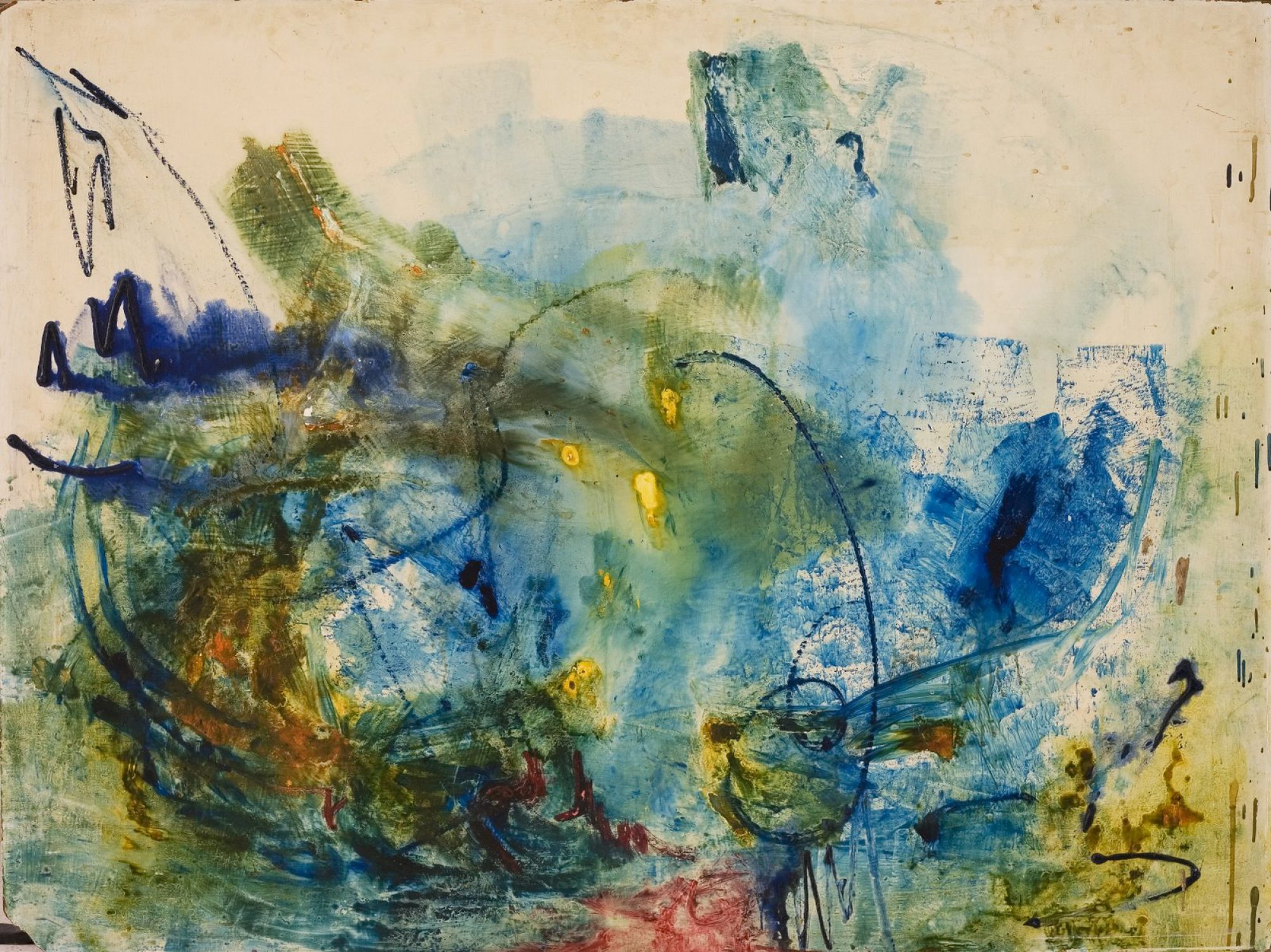“Call me Back: Celebrating the Life of Marshall Baron 1934 – 1977”
Baron’s political satire on display
From: THE HERALD 04 OCT, 2012 – 22:10
By Dr Tony Monda
… expressionist outpouring that were critical of their unjust colonial racist regime.
His exhibition at the National Gallery of Zimbabwe entitled CALL ME BACK — has a double entendre in the fact that it is a retrospective collection of his work and also a current catch-phrase used in conversation in Zimbabwe today, making Baron’s work thematically relevant in contemporaneity.
In one of his most celebrated works, Marshall Baron (1935-1977) painted the “UDI Plotters”. The painting is actually based on the famous renaissance composition of “The Last Supper”.
Notable in the painting are PK van der Byl, Ian Smith, in a dunces clown hat as well as various other architects of the colonial UDI regime.
This political satire was as prophetic as it was a chronicle of the political chicanery and monkey-shines of the Rhodesian Front cabinet.
There is something very relevant in Baron’s use of colour in his paintings which basically reflect the land, and more so the aridness of Bulawayo — the colours of the south.
Here, another painting aptly themed “Fire Bird Suite” can be seen as a metaphor for the aerial bombings which took place during the war.
One cannot fully understand Marshall Baron outside of the political context of the country. The two are inseparable.
Pertinent information that can be gathered by examining his work as a corpus of colour is the intensity of the colours and the overbearing dominance of his compositional form which can be read as a symbolic, metaphoric social claustrophobia so typical of the isolated Rhodesian society and regime of the early 1960s-1979.
It is also interesting to note that Marshall’s father’s law firm — Benjamin Baron and Co on many occasions stood as the defendant council for the late Dr Joshua Nkomo’s NDP-National Democratic Party’s legal struggles against the oppressive Rhodesian Front political party.
According to an introduction written by one of his art students and contemporaries, artist Rashid Joggee describes Baron as “an artist opposed to the unjust white supremacists regime of the day”.
His palette was derived from the Zimbabwean landscape. He employed vibrant colour contrasts that expressed the dynamic changes of light and seasons of the southern Zimbabwean savannas.
He executed many inspired variations of abstractions based on the themes of war, war desolation, and race and class divisions.
It is a pity that Marshal Baron, who died in 1977, was not there to celebrate the Independence he so bravely fought for through his telling artworks.
His association with artists of all races, creeds and colours at a time when racism was the order of the day is also commendable. His huge oil on canvas paintings which average 330cm x 180cm in size is typical of the works produced by the schools of American abstraction in the late 50s through to the late 70s.
Baron, who attended summer schools from 1966 to 1968 at Skowhegan at Maine in the US during the time that Abstract Expressionism was at its height in America, was caught up in the maelstrom of this movement in Contemporary Art.
He juxtaposed the bright colours of the natural vegetation with the earth colours of the soil in increasingly abstract forms in his monumental abstract approach. He was the principal exponent of Abstract expressionism in Zimbabwe, who influenced a host of artists amongst them Rashid Joggee, Steven Williams, Vote Thebe in a style that was then also inherited by the late Hillary Kashiri.
His work was not confined to one particular style; it varied considerably and was based on an attitude and emotional and psychological response to the socio-cultural milieu of the time.
His work contrasted the documentary social realism and unpeopled landscapes that dominated Rhodesian paintings in the 1970s and early 1980s. His work placed emphasis on spontaneous personal expression and stressed the roll of the unconscious in the act of creation as a fundamental source of inspiration.
One is reminded of the works of American Expressionists, like Pollock, Gorky, Tobey and De Kooning who also had a predilection for large canvases.
It must be known that during the 1950s Abstract Expressionism had become an international phenomenon. It was the first and foremost movement in the USA to develop independently of European examples, and the first to influence art in Europe and the rest of the world.
It provided a focus and impetus for other new developments such as Tachisme (in Europe), and Action Painting, in artistic expression and is still relevant today.
Baron’s work presents powerful symbol and direct expressions not only of his own psychic states but captured the mood and brutality of the liberation struggle. Due to his international connection and presence in the occidental contemporary art world of his times, Baron firmly places Zimbabwe as a country into the history of art. He should by all means be included in world art history.
Yesterday he was a villain for the Rhodesian government; today he is a hero for the Zimbabwean Government and its rightful people. Perhaps time is what gives art its complete meaning — only through this retrospective exhibition — Call Me Back — can his art be endowed its complete meaning and relevance as a memoir of the war.
Dr Tony Monda holds a PhD in Post-Modern Art Theory and a Doctorate in Business Administration( DBA) in Post-Colonial Art and Heritage Studies, Law and Art Diploma from Georgetown University, Washington, DC, and worked with WALA (Washington Area Lawyers Association). He is also a practising artist, art critic and designer Corporate Image Consultant.

